If there’s one thing EW’s writers like to do it’s read. We’re selfish about it — unabashedly so. We read what we love, and that’s what we offer to you. This year we tried, more than ever, to read Oregon and Eugene authors, including those brave enough to self-publish. This area is awash with rain all winter long, but it’s awash with literary talent and good local bookstores, too. Head over to Tsunami, Black Sun, Smith Family, J. Michaels or the unfortunately named but full of good books UO Duck Store, to name only a few, and support books, local bookstores and those among us willing to put their words and their selves onto page and out into the world. — Camilla Mortensen
(OR.) = Oregon author
fiction
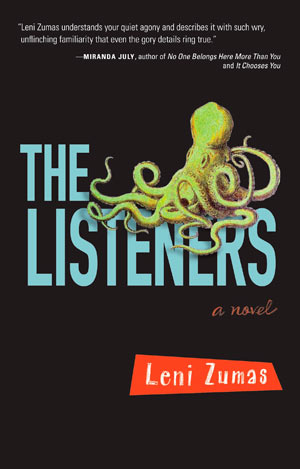
(OR.) The Listeners By Leni Zumas. Tin House Books, $15.95.
Portland author Leni Zumas’ latest novel The Listeners tells the story of Quinn, a thirty-something ex-punk rocker, whose band, once on the verge of stardom, fell apart at the last minute. Now she works at a failing bookstore, otherwise drifting through life, running into ex-bandmates with names like Cam and Geck, haunted by memories of childhood trauma and observing the world from a caustic distance.
Parallel to Quinn’s story is the story of her conservative brother; by some measures his life is more on-track than Quinn’s, but by others he’s just as lost, and locked in orbit with his bottoming-out sister. Zumas’ prose is stark, her chapters brief — many only a paragraph long. The narrative jumps back and forth in time from the present, to Quinn’s days on the road with her band and even further back to her childhood, retelling a tragedy in Quinn’s family with morbid and grisly detail. She paints the edges of the event with imagery of violence, menstruation and death — never quite clarifying detail. Zumas’ book is full of many dark passages, so rich in dense imagery they’re best read like poetry, gleaning feeling over substance, atmosphere instead of narrative.
I love stories of damaged people hammering out family on their own terms, sometimes with bandmates, drinking buddies or actual relatives like Quinn’s brother, mother and father (whom she dryly calls Mod and Fod.) Quinn is flawed but big hearted, and I loved getting to know her, like the tattooed girl you just met at the bar: She drinks too much, she smokes too much, you’re fairly certain half of what she says is complete bullshit, but you’re falling a little bit in love with her anyway. — William Kennedy
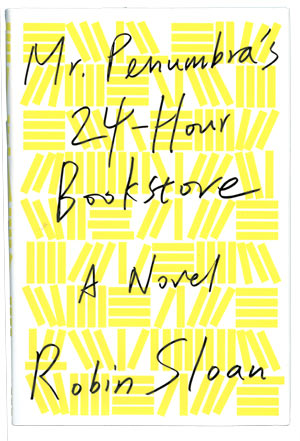
Mr. Penumbra’s 24-Hour Bookstore By Robin Sloan. Farrar, Straus and Giroux, $25.
Print is dead! Long live print! Print is irreplaceable; it’s destined to last as long as humankind!
Thus is the age we live in, the age Robin Sloan addresses in his first novel. Clay Jannon, a graphic designer by trade, begins work in Mr. Penumbra’s bookstore, and a mystery meshing ancient lore, modern technology, codes, puzzles and a fun group of obsessive friends. Through giggle-inducing twists and turns, Clay and company try to solve a puzzle to unlock the secret to immortality.
Sloan doesn’t use the book to advocate for one side of the print-digital divide. Instead, the lighthearted story gives credence to that sane notion that owning a bookcase and a Kindle won’t create a rift in the time-space continuum and cause the world to implode. You’re not with us or against us. It’s writing that’s really immortal. — Shannon Finnell
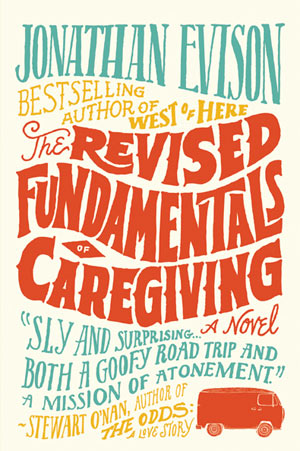
Revised Fundamentals of Caregiving By Dean Evison. Algonquin Books, $23.95.
There’s a lot that’s not quite there in Dean Evison’s Revised Fundamentals of Caregiving. But, you know, there’s a lot not quite there in much of real life and Evison captures that well: embarrassing jealous fits, crass jokes that fall flat and clumsy attempts at romance. The novel tells the story of the repetitively named Benjamin Benjamin, a likeable if somewhat schlubby former stay-at-home dad trying to get back in the game after a divorce. Until now he’s let life happen to him, dabbling in writing poetry but generally finding purpose in taking care of his kids and being a husband. Like a lot of divorce stories, children involved in trauma drives Benjamin and his wife apart. In Revised Fundamentals this tragedy feels somewhat hackneyed, a plot device preventing petulant adults from owning up to their own shortcomings instead of an actual trauma.
Benjamin finds work after the split with his wife taking care of a young man with muscular dystrophy named Trev. In his relationship with Trev, Benjamin owns up to his mistakes, comes to terms with his divorce and begins to make early and awkward attempts at finding romance again. When Benjamin and Trev set off on a road trip to patch up Trev’s relationship with his own dad, they pick up a motley crew of characters on the way, helping Benjamin reestablish himself as a gifted caretaker.
What redeems the novel’s occasional shortcomings are well-drawn characters, laugh-out-loud scenarios and a dead-on eye for what makes life hurt so much sometimes: “Listen to me: everything you think you know, every relationship you’ve ever taken for granted, every plan or possibility you’ve ever hatched, every conceit or endeavor you’ve ever concocted, can be stripped from you in an instant. Sooner or later, it will happen. So prepare yourself. Be ready not to be ready. Be ready to be brought to your knees and beaten to dust. Because no stable foundation, no act of will, no force of cautious habit will save you from this fact: nothing is indestructible.” — William Kennedy
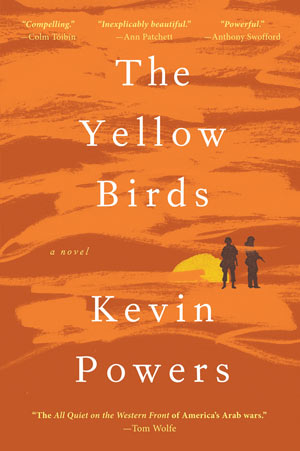
The Yellow Birds By Kevin Powers. Little, Brown and Company, $24.99. Amazon.com Editors’ Pick Book of the Year.
I’ve never shot a gun. I’m opposed to violence on many levels. The act of enlisting in the service is totally foreign to my being. Yet I find stories of young men going to war endlessly fascinating, stirring in me a primal thought, a question central to the identity of many men: “Could I march into combat?”
I picked up Yellow Birds because of the blurb on the cover comparing it to one of my favorite war novels, All Quiet On The Western Front; it stands up well to the classic. Written by a veteran of the Iraq war, Yellow Birds is about friendships forged in impossible circumstances between young boys lured into war by romantic notions of becoming men, much like myself, clouded by too much Hemingway. But as is often the case, idealistic boy-soldiers come home profoundly broken men.
The slim novel opens with the brilliant line, “The war tried to kill us in the spring,” and it continues to alternate back and forth between life on the frontlines in Iraq and stateside, showing how combat can make the foreign feel like home and home feel strange. Depicting violence and its aftermath in simple and graphic prose, Yellow Birds is at other times lyric and almost beautiful, and should be required reading for anyone interested in joining the service. — William Kennedy
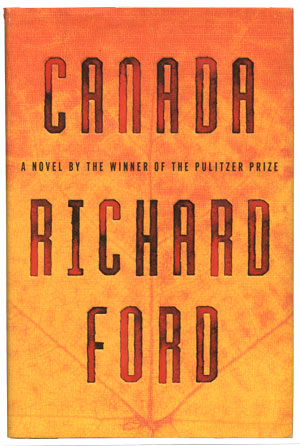
Canada By Richard Ford. HarperCollins, $27.99.
Canada is not a happy story. The simple plot isn’t awful, but alone it’s nothing to write home about. So what makes it a good read? It’s the simple language, the clarity with which the author builds isolation and the way he writes loyally from 15-year-old protagonist Dell Parsons’ point of view, even when the late-blooming boy’s interpretation of the world feels improbable or frustrating.
At the onset, Dell explains that he’s telling a story: first about his parents’ ill-fated bank robbery and then the murders that follow. It’s 1960, the Parsons live in Great Falls, Mont., and their lives have been a chronology of standard events for a family following a father’s Air Force career. More and more, it becomes clear that the Parsons are each strange and isolated, both from greater Great Falls and from each other. No one is quite likable, and Ford makes clear that nothing is going to end well.
All the while, Dell is starting to figure out himself and the world, and that’s where the beautiful writing and heartbreaking realities arrive. Central to the bank robbery portion are questions about relationships, questions that are as hard to answer in fiction as in life: Why do two miserable people stay together? What does love look like in the absence of happiness and closeness? He says of his father, whose only real relationships are with his family, “In truth, we were never very close, although I loved him as if we were.” — Shannon Finnell
The Age of Miracles By Karen Thompson Walker. Random House, $26. National Book Award Finalist.
Karen Thompson Walker’s The Age of Miracles tells the story of 11-year-old Julia, whose arrival to adolescence occurs at the same time that Earth’s rotation suddenly and catastrophically begins to slow. This could signify climate change, adolescence itself or maybe it’s just a great science fiction novel. It’s so perfectly written that everything, it seems, becomes a metaphor for something else — and somehow Walker achieves this without allowing the story to be clunky or bogged down in the process.
As Earth gradually and unpredictably slows, daylight and dark become longer, the environment suffers and, at least in the U.S., the populace splits between the mainstream “clock-timers,” who still follow a 24-hour schedule, and “real-timers,” outcasts who try to live in sync with Earth’s new rotation. While humans’ views on “day” and “night” evolve, so does Julia’s perspective on friendship, her parents’ marriage and what it means to be an outsider.
Fiction is magic because it so often gives readers a better understanding of the world without requiring us to leave our armchairs. It’s rarer, though, that a book feels destined to teach us much about ourselves. — Shannon Finnell
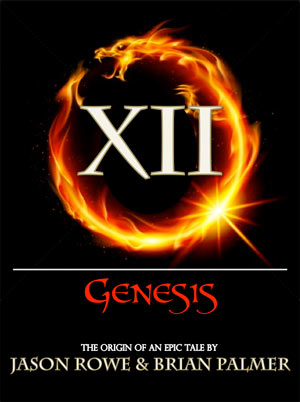
(OR.) XII: Genesis: The Origin Of An Epic Tale By Jason Rowe and Brian Palmer. eBook. $3.99.
Saving the world, but at what cost? Jason Rowe and EW freelancer Brian Palmer’s fantasy novel set nearly 100 years in the future gives this task to 12 people who go on a quest to save New Earth from a superior evil only to stumble upon many roadblocks along the way. During this grippingly detailed adventure, the 12 develop relationships with each other, power through many hardships and even learn how to fly, among other supernatural abilities they uncover.
This first in an eight-part series delves into what stands in their way of defeating the enemy — much of New Earth’s population. As they attempt to rid all that haunts their grim world, a decision must be made by others who live in it: Trust these 12 who were recruited to bring peace or continue to see them as part of evil they are in fact trying to eliminate.
Who are these 12 people? What is this evil presence they are determined to erase? And why do so many who should side with them doubt their intent? Rowe and Palmer answer these questions with scenes full of suspense in an entangled plot that has twists and turns strewn throughout.
This eBook, all 352 pages of it, was released on Dec. 12, and one-third of its proceeds will be donated to India Partners, a nonprofit group that is working to free women and girls from sex trafficking in Mumbai. — Nick Poust
(OR.) Dawn’s Early Light By Johnny Sundstrom. Xlibris, $19.99.
It takes a bit of effort at first to get caught up in Deadwood author (that’s Deadwood, Ore., not the TV series) Johnny Sundstrom’s expansive novel of the West, but once you do, the web of landscape and characters is worth the work. Set in Wyoming, the novel kicks off in 1849 on the Oregon Trail, and leaping about in time and from family to family, it follows six linked generations of Wyoming dwellers ranging from cowboys to Native Americans to a present-day disgraced journalist.
Sundstrom calls the first section of Dawn’s Early Light “Shotgun” to emulate the purposefully random fashion with which the book begins. That shotgun pellet effect and the periodic interruptions by an unseen narrator stunt the flow of what is otherwise a fascinating well-wrought tale. Dawn’s Early Light is self-published, but the writing and tale-telling is superior to most such works that don’t get as much editing as novels do through a conventional press. Dawn’s Early Light reminds me that it’s a good thing people can publish on their own these days. This sprawling story of the West, the land and the people that love it, and each other, reflects Sundstrom’s own knowledge of land, livestock and the environment; it deserves a glance from a larger press and a read. — Camilla Mortensen
nonfiction
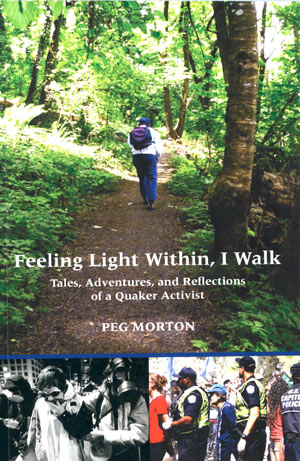
(OR.) Feeling Light Within, I Walk: Tales, Adventures and Reflections of a Quaker Activist By Peg Morton. Cedar Row Press, $15.
Eugene Quaker and activist Peg Morton’s recently published memoir, Feeling Light Within, I Walk: Tales, Adventures and Reflections of a Quaker Activist, is an inspiring tale of her 80-plus years on the planet and her work on our nation’s ongoing struggles with war, bigotry, class, corporate corruption and injustice. Morton has been smack in the middle of it, from the civil rights era to the Occupy movement.
This book also documents the history of social activism in Lane County since she arrived on the scene in 1989. She has worked with hundreds of people who are deeply involved in issues of social justice through local nonprofits, churches, other institutions and as individuals. She writes eloquently about many prominent local activists, some involved locally, others working in solidarity with the oppressed peoples of Central America.
EW has covered much of Morton’s activism over the past two decades, including her time spent in federal prison for protesting the notorious School of the Americas. She has written for our opinion pages, and she appeared on our cover during the WTO protests in Seattle, in a Kurt Jensen photo showing her covering her nose and mouth after being exposed to tear gas.
This book is remarkable in that is we get to witness the evolution of her character. Her political work is shown to us within the context of her personal struggles: reconciling her family wealth with the abject poverty she experienced in the U.S. and Central America; confronting personal issues of family, race, sexuality and religion. And she writes about the practical aspects of activism, such as how to do war tax resistance without going to prison, and the benefits of working in small groups. She ties it all together with humility, gratitude and a profound respect for life.
“I am and have always been spiritually called to join with others who are living and engaging in activism for a better world,” she writes. “Doing nothing is less than effective. For me that is not an option.” — Ted Taylor
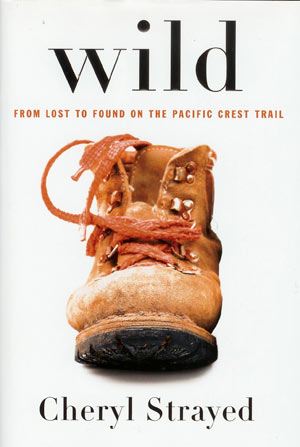
Wild: From Lost to Found on the Pacific Crest Trail
By Cheryl Strayed. Random House, $25.95. Oprah’s Book Club 2.0, No. 1 on The New York Times bestseller list.
Dear Sugar, thank you for writing such an honest, funny, sad, infuriating and entertaining memoir. That’s exactly what Cheryl Strayed, or has her legions of fans know her, Dear Sugar (her alias for an advice column on The Rumpus), has done with Wild. Now Strayed has a new fan pool, the rest of the world (and Oprah), for bringing readers along to share in her triumphs and shortcomings on her path to figuring out this crazy thing called life.
Wild bounces back and forth in space and time as Strayed doggedly walks the Pacific Crest Trail (PCT), woefully unprepared, revisiting her past like a detective looking for clues into her own psyche, finding meaning in her poverty-stricken and love-filled childhood in rural northern Minnesota, the death of her mother to cancer when Strayed was 22, a failed marriage before she was 25 to man she loved but not quite in the right way, her heroin-and-sex-fueled escapades in Portland and her forays into the Pacific Northwest wilderness to make sense of it all.
Strayed’s youthful bravery is both exhilarating and frustrating. At the tender age of 25, the rookie hiker walked, stumbled, laughed and cried her way through the PCT, from the Mojave Desert through Oregon, ending poetically at the Bridge of the Gods over the Columbia. That’s 1,100 miles. Alone. This was 1994, only a year after the PCT had officially been completed and long before it became a well-maintained jaunt for even the most casual of hikers. Her courage in the face of bears and unsavory strangers is admirable, but her repeated disregard for learning from her mistakes (not carrying enough water, flimsy footwear, a back-breakingly heavy pack) can make you want to yell at the page. Most of impressive of all, however, is her willingness to explore the wilderness of her own heart and mind. — Alex Notman
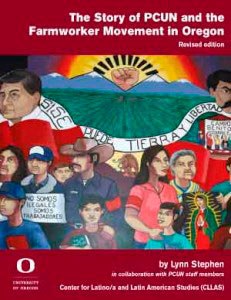
(OR.) The Story Of PCUN and the Farmworker Movement In Oregon By Lynn Stephen. UO Center for Latino/a and Latin American Studies, $9.95.
This freshly revised book by Lynn Stephen, Ph.D., a UO anthropologist, broadens our understanding of immigrants in Oregon. It relates the history of immigrant farmworkers in Oregon, mostly workers with family origins in Mexico, and their long struggle to achieve representation in a union, PCUN, Pineros y Campesinos Unidos del Noroeste — the Northwest Treeplanters and Farmworkers United.
Immigrant farmworkers became essential to Oregon agriculture in the 1940s with the U.S. government’s adoption of the Bracero Program, which invited Mexican laborers to replace U.S. workers who joined the military or industry in WWII. They were considered “heroes” for securing our food supply during the war. Since then, Mexican-American migratory and resident farmworkers have become commonplace in Oregon, harvesting our food and planting our trees, while suffering discrimination, unhealthy working conditions, marginalization and a complex legal status. They contribute to our economy and prosperity without receiving the basics of a living wage, health care or minimal labor rights. PCUN was founded in 1985 on the groundwork laid by Oregon immigrant workers, inspired by Cesar Chavez and the United Farmworkers, to address these injustices.
Stephen describes PCUN as being “a crucial part of Latino history in Oregon over the past three decades. From a small office providing legal services for immigrant workers to being a national leader in defending the rights of farmworkers and immigrants, PCUN has become a role model for the positive integration of Latino immigrants in the U.S.”
The book is based on collaboration between the UO and PCUN, with interviews, visits to the fields and the PCUN archives. It can be downloaded free online at the UO’s Center for Latino/a and Latin American Studies website at wkly.ws/1ed and is now available in hardcopy at the UO Duck Store. — Stephanie Larsen
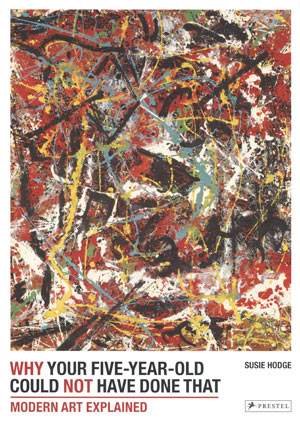
Why Your Five-Year-Old Could Not Have Done That: Modern Art Explained By Susie Hoge. Prestel, $17.95.
For a book titled Why Your Five-Year-Old Could Not Have Done That, author and art historian Susie Hoge, often has to tell a reader that, well, technically a child could have done that. Her part-guidebook, part-CliffsNotes for modern art features over 100 works from Henri Matisse to Louis Bourgeois to Ai Weiwei, and it breaks down each oeuvre by technique, historic and artistic context and location.
Take Franz Kline’s 1950 “Chief,” for example; to the “untrained” mind, the painting is a unwieldy mess of thick, black paint strokes with no eye toward representation, or even meaning, of any kind. Hoge explains that the tableau does “resemble something that a child might create,” but “a child could not compress the multitudes of subtle illusions, the suggestions of images, and the feel of determination and speed that Kline succeeds in bringing.” This reasoning feels a bit like a cop out, not because I disagree with Hoge or dislike modern art — quite the opposite — but because she alludes to these “subtle illusions” that distinguish a masterpiece from child’s play but never delves into them, never explains them, asking the reader just to trust that meaning lies within the layers of paint or clay or human fluids (see Paul McCarthy’s “Class Fool”).
That being said, this book is an incredibly digestible romp into the world of modern art, especially for those who would never dream of venturing into a gallery for fun, and boasts enough historical trivia about the artists, artwork and art movements to keep each spread interesting and teach you just enough so you can impress your friends. Did you know that before Jasper Johns ever made his iconic American flag collages, he decorated store windows at Tiffany’s in New York City? I, for one, did not. — Alex Notman
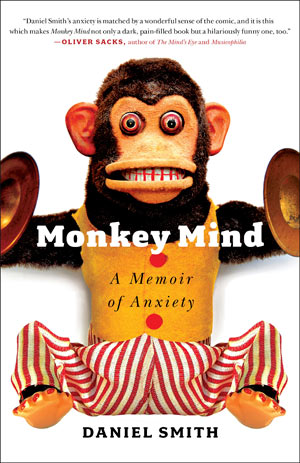
Monkey Mind: A Memoir of Anxiety By Daniel Smith. Simon & Schuster, $25.
An estimated 40 million people in the U.S. live with anxiety. I am one of them. So when Daniel Smith’s book came out this year, Monkey Mind: A Memoir of Anxiety, I was incredibly excited, and dare I say anxious, to see what a mainstream memoir would say about this silent epidemic. For people who struggle with anxiety, reassurance can become an addictive quest, and thus just to see Monkey Mind proudly displayed in every bookstore was the ultimate reassurance.
My reactions to the book’s content, however, are mixed. Smith, a journalist who has written for The Atlantic and The New York Times, deftly seduces the reader into his relentlessly fretful, sweaty-palmed life with self-deprecating humor and a robust knowledge of malaise’s history. The story of how Smith lost his virginity, one major catalyst for his anxiety, is uncomfortably honest, and falls into such a gray category of what defines consensual sex that even Dan Savage would think twice before doling out advice. Smith also describes the oft-ignored physical effects of anxiety — for him, it’s the feeling of an icicle piercing his chest, sweaty palms, gnawing his fingertips to a pulp — with such acuity that it paints a better picture than most mental health professionals ever could.
Unfortunately, the book loses its momentum by the halfway point. OK, we get it, an anxious life can be an inexhaustible cycle of torture and relief, but at some point we want to know, Mr. Smith, what are you going to do about it? There is plenty of anecdotal exploration of anxiety, but fairly few examples of how he manages it and leads a healthy and productive life — which he clearly does.
For those who live or know someone who lives with anxiety, this is a great crash course about the disorder’s daily struggles, but for those looking for a meatier discussion of one the world’s oldest ailments and its treatment, keep looking. — Alex Notman
The Passage of Power: The Years of Lyndon Johnson By Robert Caro. Alfred A. Knopf, 2012. $35.
If it’s possible that Barack Obama has not read all 712 pages of Robert Caro’s fourth volume on Lyndon Johnson, we humbly suggest that he do so over the holidays.
Not that this president should or could emulate Johnson in every way, but he does need to employ plain old arm-twisting and amassing of political debt with some of the relentless brilliance that LBJ showed. This, the fourth in Caro’s amazing series, The Years of Lyndon Johnson, covers only 1958 to 1964, but those years are a textbook in the use of political power.
The most fascinating example came after Kennedy’s assassination when Johnson flew back to D.C. from Dallas, instantly working at his fierce pace cementing power he had lost in his miserable vice-presidential years. Caro describes in great detail how LBJ eventually passed legislation probably stronger than anything Kennedy and his Ivy Leaguers could have done. How ironic that the hick from Texas, so scorned especially by Robert Kennedy, achieved so much in his presidency derived out of the death of John F. Kennedy.
Johnson’s use of power was not always pretty, to understate it, and sometimes agonizingly timed. Caro tells how he waited too long before entering the presidential primary against young Jack, and most tragically, how he could not muster the personal and political will to extricate the U.S. from Vietnam. Johnson’s Vietnam years will be the subject of Caro’s fifth book in the series, a volume we’re eager to read.
If you love history, politics, biography and want to share his joy of piecing together puzzles of freshly discovered detail, Robert Caro’s latest treasure is for you. — Anita Johnson
essays
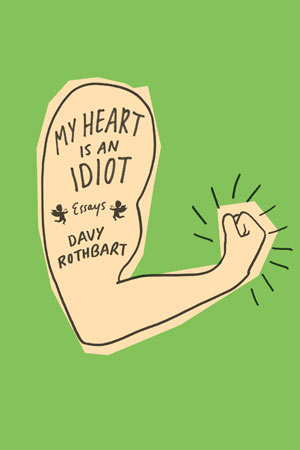
My Heart is an Idiot By Davy Rothbart. Farrar, Strays and Giroux, $25. Amazon Best Books of the Month, September 2012.
Indeed, Davy Rothbart’s heart is an idiot. But so is mine. This 16-essay book opens with Rothbart’s recount of childhood trickeries aimed at his deaf mother. What had me shaking my head halfway through had me smiling by the end, effectively hooking me for the rest of the book.
Rothbart is the founder and publisher of Found Magazine and author of 2005 anthology The Lone Surfer of Montana, Kansas. Like many of us, Rothbart is constantly falling in love, always with the wrong people, and occasionally before he’s even out of love with another. Feeling heartsick yet hopeful is the common thread weaving through each of the 16 essays.
Throughout each essay his sentimentalism strikes close to home, funny and melodramatic all at once. Each woman he meets is beautiful in her own right; each experience he has is fraught with meaning. He is always searching for “the one,” no matter what else he is doing.
However, these small tales, these seemingly insignificant experiences Rothbart has, all seem to add up to something bigger with each page turned. Although he may seem perpetually heartbroken, his words are sweet and meaningful. Hope and humor never leave his heart.
Do you read way too much into small exchanges with strangers? Do you often find yourself imagining future scenarios based on fragments of information? Do you believe life is a series of beautiful, fleeting interactions? Your heart might also be an idiot. It feels good, doesn’t it? — Jackie Varriano
The Tangled Bank: Writings from Orion By Robert Michael Pyle. Oregon State University Press, $18.95.
Lepidopterist Robert Michael Pyle came to the Eugene Natural History Society last May from his farm in southwest Washington to give a talk on butterflies, a topic for which he is well known. I missed the talk, but lucked into eating dinner at a downtown restaurant with Pyle and a fellow writer who is working on a book on road kill. I forget where we ate or what we ate because all I remember was the fascinating conversation.
Pyle can discourse on a variety of topics and make all of it fascinating and somehow make you feel, as you chat with him, that you just might be fascinating, too. Reading Pyle’s collection of essays, The Tangled Bank, is a bit like having dinner with him: The topics are diverse and fascinating; Pyle manages to be both chatty and scientific and in his efforts to show his reader how fascinating the natural world is, he lets you know that you can see these fascinating things as well. The essays are pulled from Pyle’s Orion and Orion Afield column, also called “The Tangled Bank,” and include one column that was pulled for editorial reasons. Pyle writes on butterflies, boogers, Amsterdam and turtles to touch on just a few topics, and each is a pearl waiting to be pulled out and worn close to your skin. — Camilla Mortensen
teen
The Edge of Nowhere By Elizabeth George. Viking, $18.99.
(OR.) Amber House By Kelly Moore, Tucker and Larkin Reed. Arthur A. Levine (Scholastic), $17.99.
Adult readers may bemoan Twilight, mock Harry Potter and wish The Golden Compass was “as good as” C.S. Lewis’ Narnia books, but if there’s one thing getting a doctorate in literature has taught me, it’s to appreciate good, light reading, and some of the best light reading out there is in young adult fiction. Thanks to Potter and Twilight, publishers seem to be taking more risks with fantasy, ghosts and magical powers, and that’s good news for escapist teen readers and adults.
Amber House, written by a mother and two daughters from Jacksonville, Ore., is the first in a trilogy that weaves strange powers, ghosts, and family drama into a web of time and altered time. The book takes place in an old mansion in Maryland, layered with secrets both historical and new, as Sarah deals with family memories, turning 16 and her younger brother’s autism.
Elizabeth George’s The Edge of Nowhere brings the a hint of the paranormal as well, this time to the Pacific Northwest, as Becca King, a girl with the strange power to hear the thoughts of others and a haunted past, finds herself homeless and on the run on Whidby Island, Wash. Like Amber House, Edge brings romance into the supernatural teen plot, and both books deal with a teen protagonist falling for a boy of a different racial background with tact and realism (these are real boys, no Edward Cullens here). The Edge of Nowhere is the first of a series as well, and both promise to leave young adult and adult readers wondering what will come next. — Camilla Mortensen
The Great Unexpected By Sharon Creech. HarperCollins, $16.99.
One of my favorite young adult works, which still makes me cry, is Katherine Paterson’s The Bridge to Terabithia, and there’s something about Sharon Creech’s The Great Unexpected that brings that book to mind, mixed perhaps with a little Because of Winn Dixie. Narrator Naomi Deane, who shines brightly despite the loss of her parents and a withered arm from a long-ago accident, lives in the small town of Blackbird Tree with her chatty best friend Lizzie Scatterding. One day a lovely boy drops out of a tree and soon a mystery, a bit of a tragedy and a delightful story full of hope are underway. — Camilla Mortensen
poetry

(OR.) Evensong By Ingrid Wendt. Truman State University Press, 2011. $15.95.
Lane County is blessed with a plethora of poets, and not only that, we are also lucky to have poets that care about the community, from placing poetry in downtown parking garages to printing poems on broadside to be displayed with photographs at Maude Kerns to call attention to the destruction of Parvin Butte, as Ingrid Wendt and other local poets did earlier this year.
Wendt’s collection of poetry, Evensong, is wistful and lovely, a profusion of small narratives that reflect Wendt’s musical background, her everyday world in and around Eugene and simultaneously a global perspective on life and loss. — Camilla Mortensen
UO Duck Store Literary Duck 2012 best sellers
(OR.) Tough By Nature: Portraits of Cowgirls and Ranch Women of the American West By Lynda Lanker. OSU Press, $39.95.
Hunger Games Trilogy By Suzanne Collins. Scholastic, $53.97.
(OR.) UO Ducks Cookbook By C.J. Gifford. Gibbs Smith, $14.99.
Shades of Grey Trilogy By E.L. James. Random House, $47.85.
(OR.) It Never Rains at Autzen Stadium: The Don Essig Story By Chuck Wenstrom, $19.95.
Wild: From Lost to Found on the Pacific Crest Trail By Cheryl Strayed. Random House, $25.95. (Reviewed this issue)
When Women Were Birds: Fifty-four Variations on Voice By Terry Tempest Williams, MacMillan, $23.
It Never Rains at Autzen Stadium By Kenny Moore. MacMillan, $27.99.
Game of Thrones (series) By George R.R. Martin. Random House, $17 (each).
Bossypants By Tina Fey. Hachette, $26.99.
Tsunami Books reading list
(OR.) The Orchardist By Amanda Coplin. Harper, $26.99. (Proprietor Scott Landfield’s favorite)
State of Wonder By Ann Patchett. Harper, $15.99.
Me and Lee: How I Came to Know, Love and Lose Lee Harvey Oswald By Judyth Vary Baker. Trine Day, $21.95. (Published locally)
The Art of Fermentation: An In-Depth Exploration of Essential Concepts and Processes from Around the World By Sandor Ellix Katz and Michael Pollan. Chelsea Green, $39.95.
Auntie Yang’s Great Soybean Picnic By Ginni and Beth Lo. Lee and Lo, $18.95.
Diary of a Wimpy Kid #7: The Third Wheel By Jeff Kinney. Harry N. Abrams, $13.95.